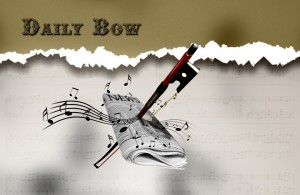 Hurricane Sandy was a tragedy… but out of this tragedy new musical life was born.
Hurricane Sandy was a tragedy… but out of this tragedy new musical life was born.
During Hurricane Sandy, I heard the howling of the wind and the driving rain outside my studio in Toronto. Sandy was hitting Toronto hard, and I was surveying the scenes of the wreckage on the internet. But then I got up and went to the piano, and I became very still and very meditative, and I began to play. After an hour had passed, I had a new body of work; I had improvised a series of new works for the piano, music inspired by the intensity of the storm, but also the sense of calm that had come over me.
There were pieces of metal siding being blown down the street outside, clanging around in the wind. And the trees were shaking violently. But in my warm studio, I was at peace and composing up a storm of my own.
I have been composing and improvising on the piano for more than twenty years, and I often get inspiration from that feeling that is a mixture of both energetic passion and meditative contemplation.
This is a truly remarkable story. To visualize how in the midst of destruction and chaos, one person harnesses those energies and directs them towards creative purposes in order to generate works of art is inspiring.
The composer, and also author of this article, is Joel Garten, a Toronto-based improvisational pianist and modern / avant-garde / jazz musician. He composed two new avant-garde works during the torrential assault which racked the eastern side of the United States and Canada.
The imagery and concept of a storm has many appearances in classical music. It was directly associated with the Sturm und Drang concept (Storm and Stress) which dominated works such as Mozart’s Symphony No. 25 in G-minor and Piano Concerto No. 20 in D-minor, as well as Beethoven’s gripping storm setting from his Symphony No. 6 ‘Pastoral’. Many other works over the centuries have displayed viciously powerful storm scenes, from Henry Purcell’s rendition of Dido and Aeneas to Benjamin Britten’s haunting tempest in Peter Grimes.
Sometimes the greatest of disasters can push people to do some of the greatest things.
The first recording is me improvising a new work on the piano. I am playing the keys of the piano with my left hand, and with my right hand I am playing on the strings of the piano with an Indonesian gamelan mallet.
Garten writes about how he uses a wide variety of different tools to play the strings on the piano. True to the fashion of modern music, these include seemingly unrelated objects such as chopsticks, paint brushes, and his hands and fingers. Anyone who has dabbled in avant-garde music will be familiar with this.
The second recording of that night is a longer improvisation which is solely played on the keyboard, and both more contemplative and more intense. I am exploring some new ideas that have come into my music in the last few days, as well as feeling the energy of the weather outside.
Read the full story – New Avant Garde Classical Music Composed and Performed During Hurricane Sandy














No comments yet.